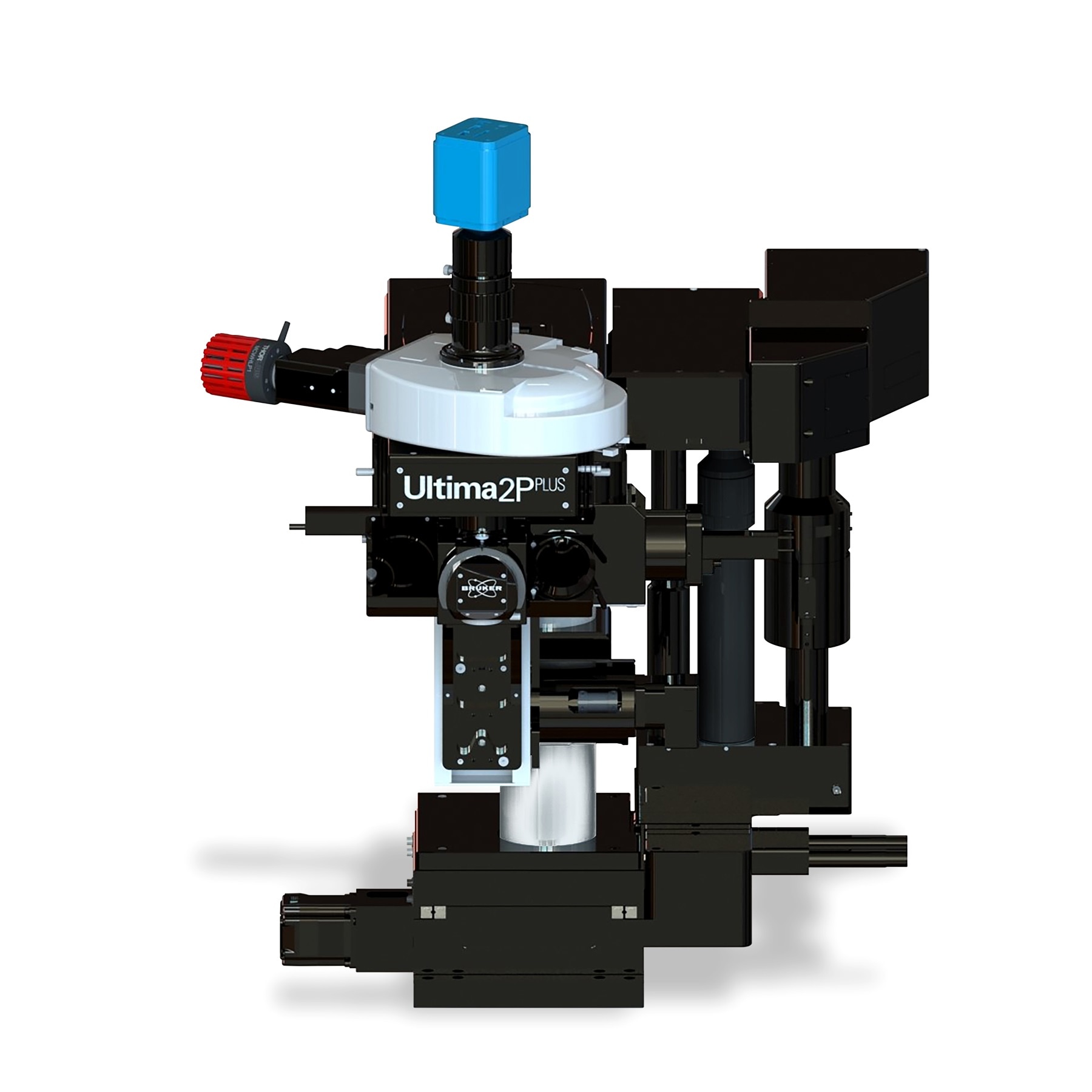At the 2018 Annual Meeting of the Society for Neuroscience, Bruker announced the release of the Ultima 2Pplus next-generation multiphoton, all-optical stimulation and simultaneous imaging platform for neurobiology applications.
 The Ultima 2Pplus features the best commercially available combination of advanced photostimulation experiments, including holographic stimulation, combined with simultaneous wide-field, enhanced-sensitivity imaging. In addition, the new Ultima 2Pplus anticipates future techniques by offering longer wavelength 3-photon imaging (up to 1700 nm) for looking deep into living tissue.
The Ultima 2Pplus features the best commercially available combination of advanced photostimulation experiments, including holographic stimulation, combined with simultaneous wide-field, enhanced-sensitivity imaging. In addition, the new Ultima 2Pplus anticipates future techniques by offering longer wavelength 3-photon imaging (up to 1700 nm) for looking deep into living tissue.
An extended clearance stage designed for large-animal imaging, and a fully corrected, decoupled electrically tunable lens (ETL) for simultaneous holographic stimulation and 3D imaging make the system uniquely suited for advanced neuroscience inquiry into awake animals.
The neuroscience community has long desired microscopes that support both 3D, high-speed photoactivation and full-field, deep imaging. Bruker’s novel Ultima 2Pplus promises a single-tool solution, providing a new all-optical resource for quantitative investigation.”
Dr. Adam Packer of Oxford University.
“The Ultima 2Pplus builds on over 15 years of leadership in instrument and application development for neuroscience,” added Xiaomei Li, Ph.D., Vice President and General Manager for Bruker’s Fluorescence Microscopy Business. “This new system makes a leap forward from conventional multiphoton performance to an almost ideal, all-optical, single-tool solution for both photoactivation and wide-field imaging.”
The Ultima 2Pplus system builds on the platform design of Bruker’s Ultima Multiphoton Microscopes to provide all the advantages of industry-leading photoactivation, with new advances in field of view, sensitivity, wavelength, and sample accommodation. The system’s optimized optical train confers exceptional performance to the very edges of the wide field. The design also extends the 3-photon wavelength range to 1700 nm. Decades of laboratory experience and close collaboration with leading scientists around the world has led to a host of unique capabilities and features found only on Ultima systems. The Ultima 2Pplus delivers an ideal combination of flexibility, resolution, imaging depth and speed, allowing users to perform simultaneous imaging, stimulation and electrophysiology protocols with greater efficiency and effectivity.